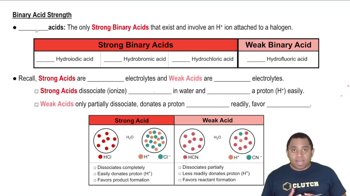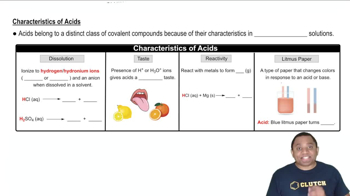Here are the essential concepts you must grasp in order to answer the question correctly.
Oxidation States and Acid Strength
The strength of an oxyacid is influenced by the electronegativity and oxidation state of the central atom. As the electronegativity decreases down the group in the periodic table, the ability of the central atom to stabilize the negative charge on the conjugate base diminishes, leading to weaker acids. Thus, for oxyacids with the same oxidation state, chlorine is a stronger acid than bromine, which is stronger than iodine.
Recommended video:
Reactivity of Hydrofluoric Acid
Hydrofluoric acid (HF) is unique due to its ability to form strong hydrogen bonds and its reactivity with silica, a major component of glass. This reactivity can lead to the etching of glass, making it unsuitable for storage in glass containers. Instead, HF is typically stored in plastic bottles to prevent reactions that could compromise the container.
Recommended video:
Interhalogen Compounds
Interhalogen compounds are formed between different halogens and can exhibit varying stability based on the size and electronegativity of the halogens involved. While ICl₃ is stable due to the larger size of iodine allowing for effective overlap with chlorine, BrCl₃ is not known because bromine's size and electronegativity do not favor the formation of a stable compound with chlorine, leading to instability and decomposition.
Recommended video:
 Verified step by step guidance
Verified step by step guidance

